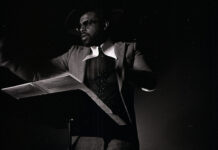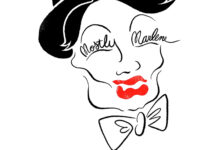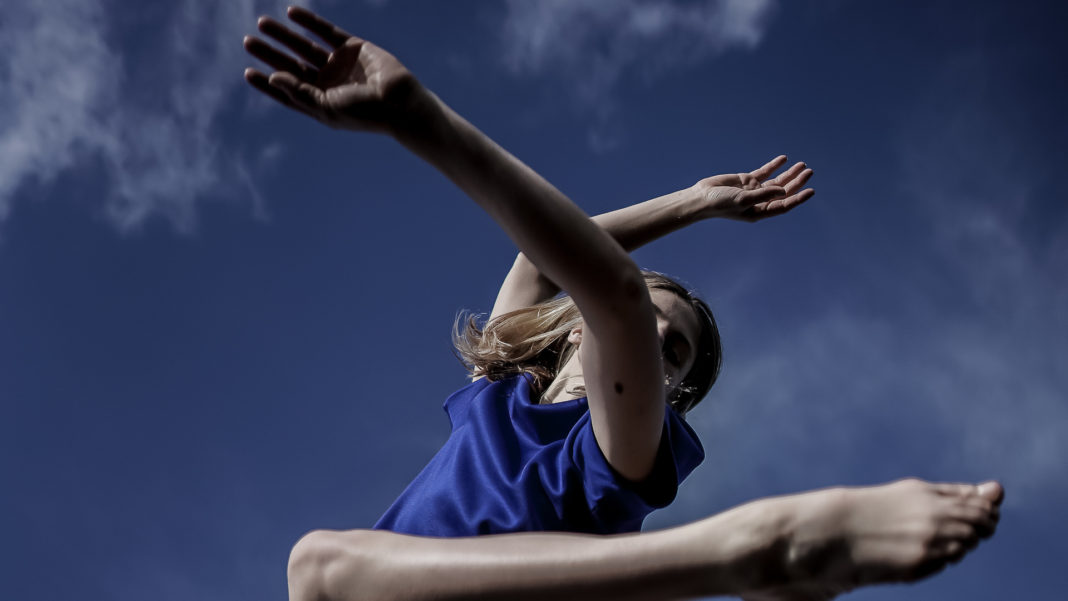“I grew up with more classical training with dance. I started dancing at a young age. It’s a form of community experience, expression, practice with lots of things underlying it. Over the years I’ve definitely broadened my view of what dance can be and what it means to me.” So says dancer Jill Wilson.
She is one of the founders of Jacob Jonas The Company (along with Jonas and William Adashek). She’s been dancing with the company since its inception and recently added a producer title to her resume by producing, along with Jonas, the films.dance festival that launched yesterday.
The company produced fifteen new dance films that will be unveiled one-at-a-time over 15 weeks. The first film, Kaduna, was released yesterday. Wilson dances in two of the films: Match (debuts on February 15th) and Same Sky (debuts March 22nd.)
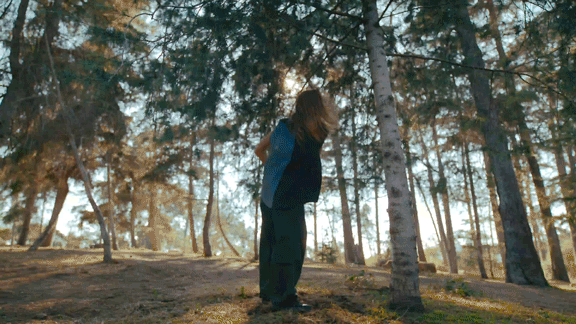
Last week I spoke by phone with Wilson about contemporary definitions of dance, working on these films and how dance might thrive with or without superstars. What follows are excerpts from that conversation that have been edited for length.
I’ve watched all fifteen films you’ve produced. It left me wondering is all movement dance?
That’s a great question that comes up a lot actually. Dance is movement, but I wouldn’t say all movement is dance. It has to do with intention and where your intention lies in the movement to make it into a dance.
How did these fifteen films become the projects Jacob Jonas The Company opted to produce?
We brought in a group as a committee to brainstorm to create films that intersect dance styles and artists who may not typically work together because of geography or their dance style. We did research and invited individuals we thought would be interesting pairings. Many had never met in person. We produced all fifteen films early in the pandemic. We found a safe way to create them and wanted to build a community.
Did you build into the films a thematic through-line amongst the films? If not, did you in hindsight discover there was one?
There were a few themes we kept in mind when creating the series. One was celebrating the human spirit and using dance to celebrate that authentic meaning of being human. One was celebrating diversity in dance. Another strong theme was the relationship to nature and how do we use the backyards of these countries in the films.
How much of the work do you think is a response to the pandemic since they were all created after the pandemic closed theaters around the world?
It’s definitely a reflection of the time – this new area that we as artists and everyone in the world has entered into. We have a deeper understanding of each other because we’re having a shared experience. Whether intentionally or subconsciously, those ideas are running through artists as they create. We might not have created a film specifically about isolation, but the themes are there as we express ourselves.
What is, or should be, the role of narrative in dance films?
I don’t think it is necessary, but I think it exists and when it does it could allow for individuals who might not have a strong connection with dance to connect to it more. Dance can sometimes be misunderstood by those without experience. One of the beautiful things about dance is its ability to communicate without words. Having worked on these films across continents and cultures you can see the universality of the movement telling the story.
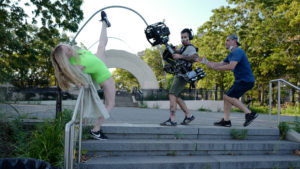
One of the films you produced, Another Serious Dance Film, is making fun of dance films. What are the pitfalls that have to be carefully navigated so that projects don’t fall victim to everything this film is spoofing?
I love it’s tongue-in-cheek nature! I think it is a great reminder to not take things so seriously. We can get so in our head and this is a reminder that we can celebrate and have fun and make something to laugh about and bring people together in a light-hearted way.
Looking at some of the films it made me wonder when an editor might be just as responsible for the success of a given film as much, if not more so, than the choreographer. What was your experience on these fifteen films in that regard?
Not only the editor and choreographer, but the director is really important for the films we produced. We made sure people could come together and share their creative ideas as a team and create the best results. Something I’ve learned from this process is seeing how many versions of one film there could be. If you had two different editors on the same film you could make two different films with the same material. It comes down to artistic practice.

For you personally, what did you get out of these projects as a producer versus what satisfies you as a dancer?
The global community has been something that has been something I really treasure and am grateful to be a part of. I feel much more involved. As a dancer you have to improvise to be a dancer, as a producer you oversee it all with the director, the choreographer, the dancers. My community gets broadened.
Legendary actor, dancer, director and choreographer Gene Kelly told Interview Magazine that “The future of dance will always be tied up with the public’s acceptance of the star. If they accept the star, then they’ll accept the dance.” We have very few actual dance stars today of the kind he was describing. From your perspective, what will the future of dance be tied up with moving forward?
The first thing that comes to mind is the feeling and the emotion. There’s something so powerful about dance. People, especially now, need the time to dive deep into their feelings. I read a New York Times article talking about arts and artists right now. Much of the world is very constrained and art is something that can help us exhale. Dance is one of the ways we can do that. That’s something to recognize – the power of the art form.
Main Photo: Jill Wilson (Photo by Jacob Jonas/Courtesy Jacob Jonas The Company)


